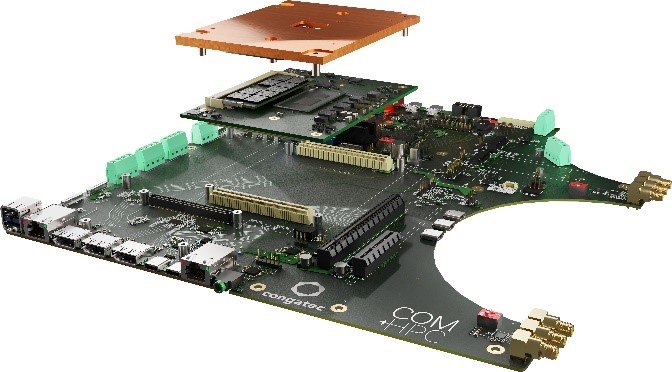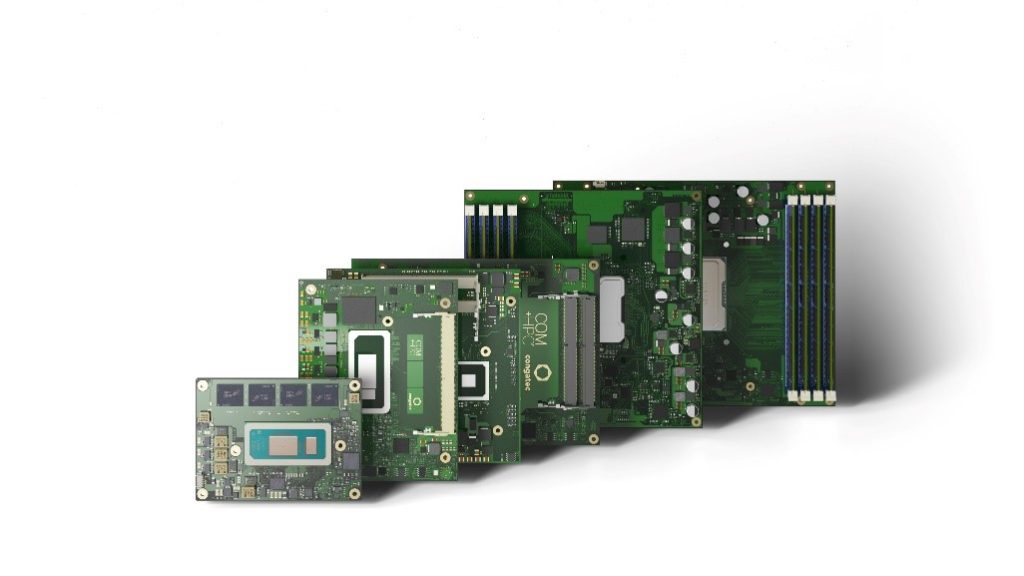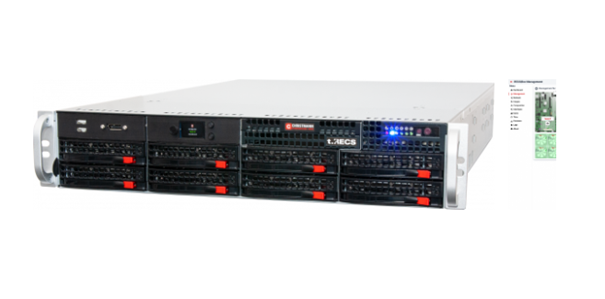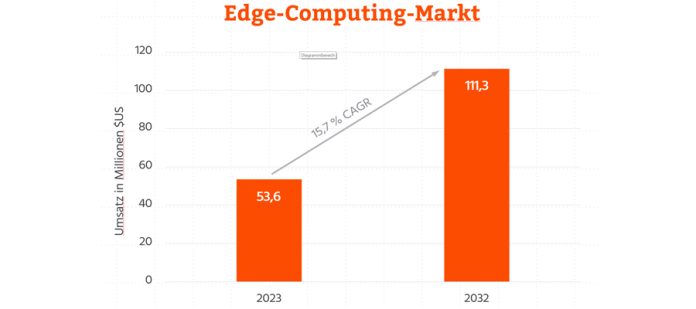The environment, the protection of nature, a shift in demographics, skilled labor shortages, challenges to security – our society is facing fundamental change. Key technologies like digitization and artificial intelligence can smooth the path for change by enabling smart edge devices that promote a green, sustainable, and livable future. Embedded systems are at the core of all these applications, and their use is rapidly increasing – as is the speed of innovation. Given this, it is all the more important to design, develop, and produce these systems in a more sustainable manner.
Embedded systems and edge servers collect, analyze, and transmit data as an integral part of the telecommunications and 5G infrastructure. Used across all industries and application areas, they act as a driver for future technologies and greater sustainability. Providing ever higher performance in an ever more compact design, they enable autonomous mobile robotics, more advanced medical diagnostics and therapies, as well as innovative solutions for the automation industry. All these applications serve to optimize industrial processes and controls and save resources. As this improves both the profitability and efficiency of applications, embedded systems can help solve our societal challenges.
Shorter development cycles and replacements mean more e-waste
Rapid technical advances, increasingly powerful processors, and specialized processing units like GPGPUs (General Purpose Graphics Processing Units) and NPUs (Neural Processing Units) on the one hand, and ever higher data processing requirements for IIoT-enabled, networked devices, and AI-driven applications on the other, are leading to shorter and shorter development cycles. To stay competitive in the face of such rapid innovation, secure their position as trend setters, and develop new business models, companies must regularly invest in new systems. Experts have already been witnessing this trend in recent years and expect it to continue. For example, as per a recent global server market study, data research institute International Data Corporation (IDC) expects the market to grow by almost 12% in the coming year compared to this year (source: IDC Quarterly Server Tracker, 2023Q1).

The alternative: Modular Computer-on-Modules and Server-on-Modules
Any data center modernization that involves the replacement of entire rack systems creates massive amounts of e-waste – the exact opposite of sustainable and efficient use of resources. The good news is that there is another way. Modular designs based on Computer-on-Modules and Server-on-Modules offer a cost-effective and attractive alternative that avoids the need for complete rack replacement. Such platforms make it possible to upgrade existing hardware with the latest processor technology, while retaining all other components such as the carrier board, power supply, and housing. This reduces the number of components that must be replaced and disposed of or recycled at great expense. It also saves end customers money: Server manufacturer Christmann cites 50% cost savings for upgrades using standardized Server-on-Modules versus full server replacement.

More computing power – less energy consumption
The same arguments that apply to servers are true for other application areas: Robots, medical devices, and industrial applications also gain from higher performance and innovative technologies when outfitted with the most advanced modules, such as those needed for processing complex AI algorithms. Modular systems offer a distinct advantage for upgrading to new technologies and performance levels: Replacing just the Computer-on-Module is far more efficient than replacing entire devices.
In view of rising energy costs and the proliferation of mobile systems, the fact that new processors and modules are generally more energy-efficient is another compelling argument for upgrades. More efficient use of resources and energy is particularly important for fixed 24/7 installations. And shorter charging times and cycles increase the availability of mobile applications like autonomous robots and driverless vehicles.
Advantages for new business models
Upgrading with the latest modules also holds great promises for pay-per-use and as-a-service providers. They can offer cutting-edge hardware platforms with maximum performance for lower upfront investment. This secures a competitive advantage for providers as well as their customers. It also reduces total cost of ownership for the hardware and maximizes return on investment. This makes the subscription economy model lucrative for both providers and customers. Utilized optimally, server installations featuring the latest hardware will ultimately also promote sustainability and efficient resource use.

Longer lifecycles for industry
Modular designs are particularly crucial in industrial applications: Longevity often plays a key role here – especially if the embedded system was customized or adapted specifically for the application. In a worst case scenario, a discontinued processor can require an entirely new development or a costly redesign. However, modular designs using application-specific carrier boards and standardized Computer-on-Modules allow even decades-old applications and designs to be upgraded with new processors. Proven legacy applications can be kept up to date through continuous processor upgrades to provide advanced features and computing performance. As software defines much of the functionality today, module upgrades extend the lifecycle of entire applications. The result is greater environmental sustainability.
COM-HPC: Standard for modular electronics design
Theory shows that modular electronics provide enormous potential for increased performance, cost savings, sustainability, interchangeability, and upgradeability. COM-HPC Computer-on-Modules from congatec exemplify such scalable designs in practice. They are specifically developed for high-bandwidth, high-performance client and edge server applications that earlier Computer-on-Module specifications cannot address. For this purpose, the COM-HPC modules support a wide range of processors besides GPGPUs, AI accelerators, ASICs and FPGAs. This guarantees maximum flexibility, scalability, and upgradability for current and future designs. High I/O bandwidth and transmission speeds are other crucial features. This includes PCIe up to the current 5th generation, USB 4/Thunderbolt 4, and 100 Gigabit Ethernet. The COM-HPC standard was created by the PCI Industrial Computer Manufacturers Group (PICMG), with congatec as co-initiator, and is designed specifically for embedded edge applications. The module standard is available in several form factors – from the upcoming COM-HPC Mini standard with a footprint of just 95×70 mm, and the COM‑HPC Client standard with three different PCB sizes and up to 49 PCIe lanes, to the COM-HPC Server in footprints D (160×160 mm) and E (160×200 mm).
Server capabilities for embedded designs
COM-HPC Server is the first standard expressly developed for edge server requirements. The modules combine server-level computing power, up to 64 PCIe lanes, and high Ethernet bandwidth with the advantages of ruggedness. Unlike conventional servers, which are confined to air-conditioned server rooms, these embedded servers can be installed near the applications themselves, even in harsh ambient temperatures and operating environments. This makes them ideal for edge applications needing high power, huge data flows, and high-speed processing with low latencies. Up to 1 TB of SDRAM memory facilitates this. Systems utilizing congatec COM-HPC Server modules are perfect for edge data processing in autonomous vehicles, collaborative robots, smart infrastructure applications, and performance-hungry factory automation.
Product series, easy upgradability, and the pursuit of even greater sustainability
Christmann t.RECS servers provide an excellent example of how to optimally utilize scalable COM-HPC modules. Thanks to the wide module selection, it is possible to optimally adapt the servers to specific requirements and to develop entire product series with scalable functionality. Upgrading the servers to add more performance as requirements increase, or to instantly leverage new processor features, is easy – a simple module swap will do the trick. This makes the t.RECS servers a prime example of how a modular design strategy helps to maximize sustainability. These edge servers not only deliver the necessary computing power for AI applications and other future technology innovations that make our lives more sustainable; they also check every box in terms of sustainable design and optimal resource utilization.
The goal is to continue along this path to find other ways to improve sustainability even further – e.g., by using more eco-friendly materials and additive technologies in PCB manufacturing, shortening supply chains, improving electronics recycling, and reducing e‑waste overall. congatec continuously works to optimize its own offerings in all these respects.








